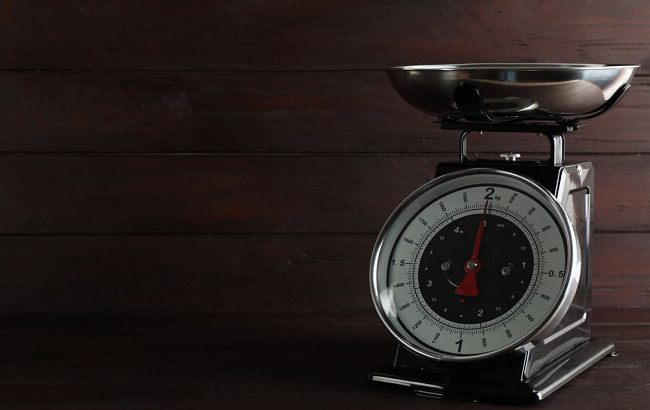
When it comes to measurements, a common question often arises: how many grams in a kilogram? The straightforward answer is simple: there are 1,000 grams in a kilogram. But this fundamental unit of measurement goes beyond just numbers. Rooted in the globally accepted metric system, it plays a crucial role in simplifying daily life, scientific research, and international trade.
The metric system’s base-10 structure ensures seamless conversions and universal understanding, making it the preferred system for over 95% of the world. From weighing groceries to calculating precise medication dosages, kilograms and grams are essential. Yet, there’s much more to explore about their history, usage, and surprising applications.
Understanding how many grams in a kilogram reveals fascinating insights into how this measurement simplifies global communication, enhances scientific precision, and integrates seamlessly into everyday tasks. Let’s uncover 7 surprising facts that showcase its true significance!
1. The Simple Answer: 1,000 Grams in a Kilogram
To kick things off, the straightforward answer is that 1 kilogram equals 1,000 grams. This is based on the metric system, which is designed for simplicity. The prefix “kilo” literally means “a thousand” in Greek. Understanding this conversion makes it easier to measure weights in grams or kilograms without confusion.
Why Does the Metric System Use 1,000?
The metric system’s structure is built around multiples of ten, making it incredibly intuitive. Here are some reasons for its widespread use:
- Simplicity: Its base-10 structure aligns perfectly with how we count.
- Universal Application: It’s used worldwide, making global communication and trade much easier.
- Consistency: It works seamlessly across various measurements like liters, meters, and kilograms.
This consistent system eliminates the headaches of converting between different units, a significant advantage over systems like the imperial system.
To explore how tools like SilkTest.org simplify such conversions, check out this helpful resource.
2. The Metric System: A Global Standard
Did you know that over 95% of the world’s population uses the metric system? This global acceptance stems from its ease of use and universal application. For example, anyone can quickly calculate how many grams in a kilogram without a calculator.
Why the Metric System Works Globally:
- Standardization Across Borders: International trade relies heavily on metric units.
- Precision in Science: Scientists prefer the metric system for its accuracy and simplicity.
- Adaptability: It works for everything from small measurements like milligrams to massive ones like metric tons.
Even in countries like the U.S., where the imperial system dominates, the metric system is crucial in scientific, medical, and industrial fields.
3. Grams and Kilograms in Everyday Life
If you’ve ever baked a cake, bought groceries, or tracked your fitness progress, you’ve likely dealt with grams and kilograms. These units are everywhere, making them indispensable in our daily routines.
Everyday Examples:
- Cooking and Baking: Recipes often specify ingredients in grams for precision.
- Shopping: Products like fruits, vegetables, and grains are weighed in kilograms at markets.
- Health and Fitness: Bodyweight is commonly measured in kilograms worldwide.
Understanding how many grams in a kilogram ensures you can handle these tasks without second-guessing.
4. A Brief History of the Kilogram
The origins of the kilogram trace back to the French Revolution in 1795, introduced as a key part of the metric system. Initially, it was defined as the weight of one liter of water, providing a straightforward and universal reference. This practical foundation made the kilogram essential for commerce, science, and everyday use.
However, as science advanced, the need for even greater precision emerged. The kilogram underwent refinements, with scientists redefining its basis to ensure consistency and accuracy.
Fun Fact:
In 2019, the kilogram was officially redefined using the Planck constant, a fundamental value in physics. This shift marked a major milestone, as it removed dependence on physical objects and ensured precision regardless of environmental factors like temperature or pressure.
This fascinating journey of the kilogram underscores the ongoing commitment to accurate global standards, enabling seamless communication and innovation worldwide.
5. Surprising Uses of Grams and Kilograms
While grams and kilograms are commonly associated with food, their applications extend far beyond the kitchen. Let’s explore some surprising uses:
- Jewelry: Precious metals like gold and silver are measured in grams for precise valuation.
- Medicine: Accurate dosages for medications are often calculated in milligrams or grams.
- Environmental Science: Kilograms are used to measure carbon dioxide emissions and other pollutants.
- Space Exploration: Mass measurements are critical for calculating fuel and payload requirements.
Knowing how many grams in a kilogram helps you appreciate the scale and significance of these industries.
6. Converting Grams and Kilograms Made Easy
Conversion between grams and kilograms is one of the simplest tasks in the metric system. Here’s how you can master it:
- To convert kilograms to grams: Multiply the number by 1,000.
- To convert grams to kilograms: Divide the number by 1,000.
Practical Examples:
- 3 kilograms = 3 × 1,000 = 3,000 grams
- 750 grams = 750 ÷ 1,000 = 0.75 kilograms
- 1.5 kilograms = 1.5 × 1,000 = 1,500 grams
With such straightforward calculations, you’ll never be stumped by metric conversions again!
7. FAQs About How Many Grams in a Kilogram
Let’s address some common questions people have about grams and kilograms:
Q1: Why is the metric system better than other systems?
The metric system’s base-10 structure simplifies conversions like how many grams in a kilogram, reducing errors and saving time.
Q2: Can large objects be measured in grams?
While possible, it’s impractical. Large objects are typically measured in kilograms for convenience.
Q3: What’s heavier: 1 kilogram of feathers or 1 kilogram of gold?
Neither! Both weigh exactly the same, but feathers take up more space due to their lower density.
Q4: How does the kilogram help in science?
Scientists use kilograms to measure mass with high precision, ensuring consistent results in experiments and calculations.
Bonus Section: Mastering Metric Conversions
To further simplify your understanding of the metric system, here are some quick tips:
- Use Multiples of 10: Remember that the metric system is built around tens.
- Practice Real-Life Examples: Try converting weights of everyday items like fruits or packaged goods.
- Rely on Tools: Use online calculators or apps for instant conversions when needed.
For more tools and resources, check out SilkTest.org, where conversions are made even easier.
Wrapping It All Up
By now, you’ve learned that how many grams in a kilogram is a question with a simple answer but far-reaching implications. The answer is always 1,000 grams, but understanding the metric system’s logic and applications opens up a world of possibilities.
From baking to science, from gold to carbon footprints, kilograms and grams are integral to how we measure and interact with the world. The metric system’s simplicity and global reach make it a cornerstone of modern life.
So next time someone asks, “how many grams in a kilogram?” you’ll not only have the answer but also a wealth of knowledge to share. Let’s embrace this universal system and continue discovering how it simplifies our lives!
You May Also Like:







